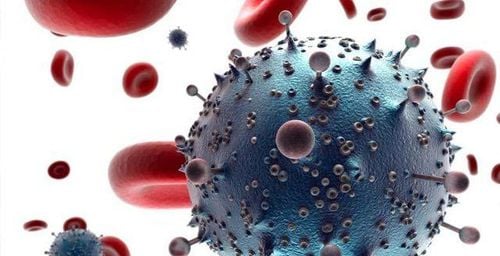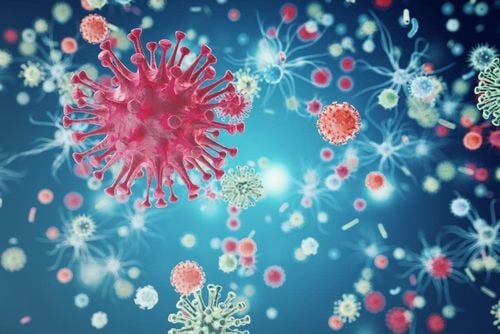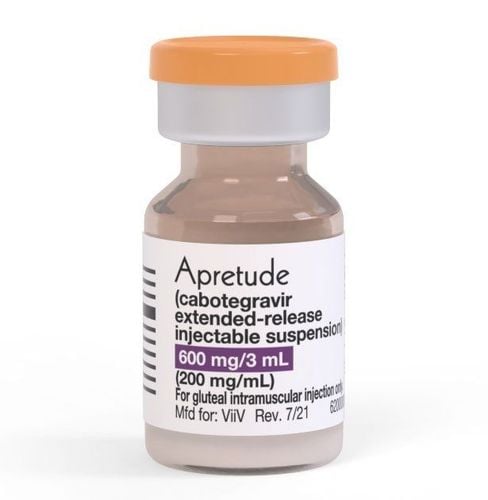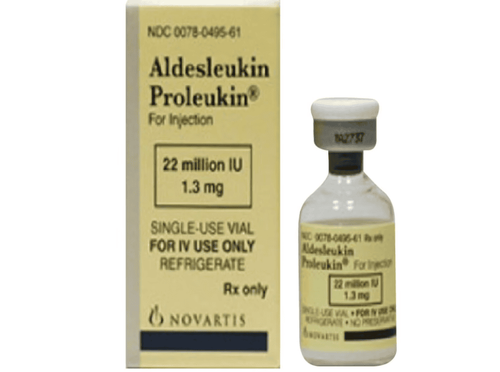This is an automatically translated article.
Acquired immunodeficiency syndrome (AIDS) is a late stage of HIV, potentially life-threatening. AIDS is only formed when the immune system of an HIV-infected person is very weak, no longer able to protect the body against basic infections. The cause of AIDS may be because the patient is diagnosed late, does not respond to treatment, has low self-care ability,...
1. What is AIDS?
HIV progresses through three stages:
Stage 1: Acute phase, first few weeks after infection
Stage 2: Chronic stage
Stage 3: AIDS
AIDS is the final stage of HIV. To develop AIDS, a person must have HIV. But not everyone with HIV will get AIDS.
There is no cure for HIV/AIDS, but there are ways to control the disease. People with HIV/AIDS often have a near-normal life expectancy with early treatment with antiretroviral therapy. Treatment can increase a person's CD4 count to the point where it is considered AIDS-free (CD4 count at 200 or higher). In addition, treatment can help control opportunistic infections.
2. The formation and progression from HIV to AIDS

AIDS được hình thành do nhiễm HIV trong thời gian dài
AIDS is formed due to HIV infection for a long time. Usually, if the disease is treated early and the response is good, the patient can maintain HIV for a long time (possibly for life). Otherwise, the disease will become severe, and turn to AIDS.
Life expectancy after diagnosis of AIDS is about 3 years, possibly shorter if a person has severe opportunistic infections. Although there is no specific treatment, antiretroviral therapy can prevent AIDS from progressing.
If you already have AIDS, it means your immune system is severely damaged. It has weakened to the point of being unable to fight most infections. That makes the sick person susceptible to a wide range of diseases such as pneumonia, tuberculosis, oral thrush, meningitis, Kaposi's cancer, lymphoma, ...
Thanks to improved antiviral treatments Better yet, most people living with HIV today do not progress to AIDS. If left untreated, HIV usually turns to AIDS after about 10 years.
When AIDS occurred, the immune system was severely damaged. You'll be more likely to get opportunistic infections or opportunistic cancers - diseases that don't usually cause health problems for someone with a healthy immune system.
Signs and symptoms of some possible infections include: Night sweats, recurrent fever, chronic diarrhea, persistent white spots or unusual lesions on the tongue or in the mouth, unexplained prolonged fatigue, weight loss, skin rashes.
3. Causes of AIDS

HIV có thể lây từ mẹ sang con trong khi mang thai
HIV/AIDS is caused by a virus. It can be spread through sex or blood, or from mother to baby during pregnancy, childbirth, or breastfeeding.
3.1 Why does HIV turn to AIDS? HIV is diagnosed with AIDS because:
CD4 cell count: HIV kills CD4 cells - white blood cells that play a big role in helping the body fight disease. The fewer CD4 T cells, the weaker the immune system. Healthy adults typically have a CD4 count of 500 to 1,500 cells/mm3. An HIV-infected person whose CD4 count falls below 200 cells/mm3 will be diagnosed with AIDS. Medical problems: A person can also be diagnosed with AIDS if HIV infection is accompanied by opportunistic infections or cancer (rare in people without HIV). 3.2 Some Complications Tuberculosis (TB): Tuberculosis is the most common opportunistic infection associated with HIV. It is the leading cause of death in people with AIDS.
Cytomegalovirus : This common herpes virus is transmitted through body fluids such as saliva, blood, urine, semen, and breast milk. If the immune system is weakened, a recurring viral infection can cause damage to the eyes, digestive tract, lungs, or other organs.
Candidiasis: Candida is a common infection associated with HIV. It causes inflammation and a thick, white coating on the mucous membranes of your mouth, tongue, esophagus, or vagina.
Cryptococcal meningitis : Meningitis is an inflammation of the membranes and fluids surrounding the brain and spinal cord (meninges). This is a common HIV-associated central nervous system infection, caused by a fungus found in soil.
Lymphoma: This cancer starts in the white blood cells. The most common early sign is painless swollen lymph nodes in the neck, armpits, or groin.
wasting syndrome: wasting syndrome is defined as a loss of at least 10% of body weight, often accompanied by diarrhea, chronic weakness, and fever. It happens to most people with AIDS.
In addition, there are some other complications of AIDS such as infection with the parasite Toxoplasma gondii (which causes disease in the brain), infection with Cryptosporidiosis (the parasite that causes disease in the digestive tract), or the rare cancer Kaposi, and some neurological complications such as memory loss, confusion, forgetfulness,...
3.3 HIV transmission increases drug-resistant virus strains To be infected with HIV, infected blood, semen or vaginal secretions must enter the body. This can happen in several ways:
Through sex : An infected person can become infected if they have vaginal, anal or oral sex with an HIV-infected partner who has blood or semen or vaginal discharge entering your body. The virus can enter the body through mouth sores or small tears that can sometimes be transmitted through the rectum or vagina during sexual activity.
From blood transfusion: In some cases, the virus can be transmitted through blood transfusion. Hospitals and blood banks screen the blood supply for HIV antibodies, so this risk is very small.
By sharing needles : Sharing contaminated intravenous drug supplies (needles and syringes) puts you at higher risk for HIV and other infectious diseases, such as hepatitis.
During pregnancy or lactation: An infected mother can pass the virus to her baby. HIV-infected mothers who receive treatment for their infection during pregnancy can significantly reduce the risk of passing the infection on to their babies.
A sick person cannot get HIV through casual contact. That means you cannot get HIV or AIDS by hugging, kissing, dancing, or shaking hands with an infected person.
HIV is not spread through air, water or insect bites.
4. HIV/AIDS prevention

Sử dụng bao cao su khi quan hệ tình dục để phòng ngừa lây nhiễm HIV
There is no vaccine to prevent HIV infection and no cure for AIDS. But you can protect yourself and those around you from infection by:
Use a condom during sex : Use a new condom every time you have anal or vaginal sex religion. Women can use female condoms. During oral sex, use an uncut, open condom or a mouth guard - a medical rubber piece. Consider using Truvada: The drug emtricitabine-tenofovir (Truvada) may reduce the risk of sexually transmitted HIV infection in people at very high risk. You need to do it every day. It does not prevent other STIs, so you still need to practice safe sex. If you have hepatitis B, you should consult your doctor and have your liver function tested before starting therapy. You also need blood tests to check your kidney function before taking this medicine. Tell a sexual partner if you have HIV: It is important to tell all current and past sexual partners if you have HIV. They need to be checked. Use a clean syringe: If you use a needle to inject medication, make sure it is sterile and do not share. Pregnant women with HIV: Can transmit HIV to their babies. But with good treatment during pregnancy, the chance of transmission is greatly reduced. Consider male circumcision: There is evidence that male circumcision can help reduce the risk of HIV infection. The social disease screening package at Vinmec International General Hospital helps customers to examine and perform HIV Ab rapid test, Chlamydia rapid test, Treponema pallidium rapid test, rapid test. Qualitative and quantitative Treponema pallidum TPHA, bacteriological staining and endoscopic fungal testing to diagnose disease risk and provide treatment protocol.
Customers can directly go to Vinmec Health system nationwide to visit or contact the hotline here for support.
Articles refer to the source: Mayoclinic.org, healthline.com
MORE:
Symptoms of HIV infection in women What is HIV positive? Manifestations of HIV infection













